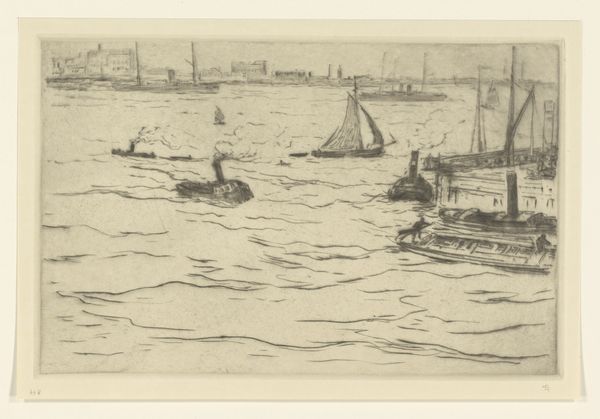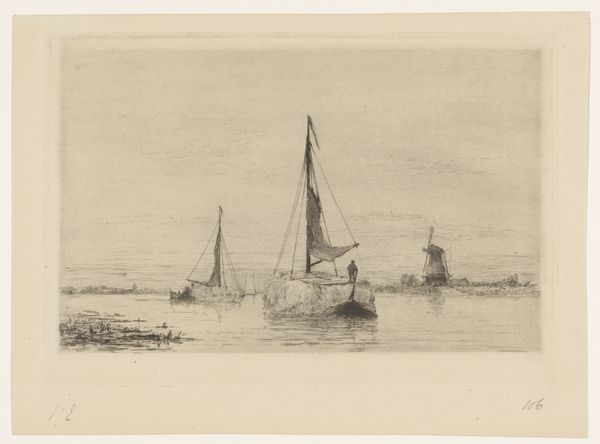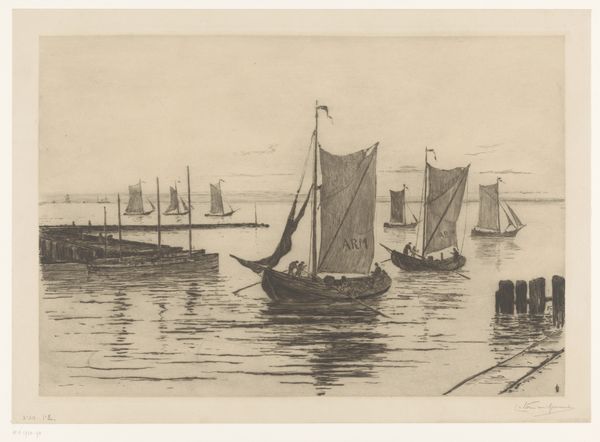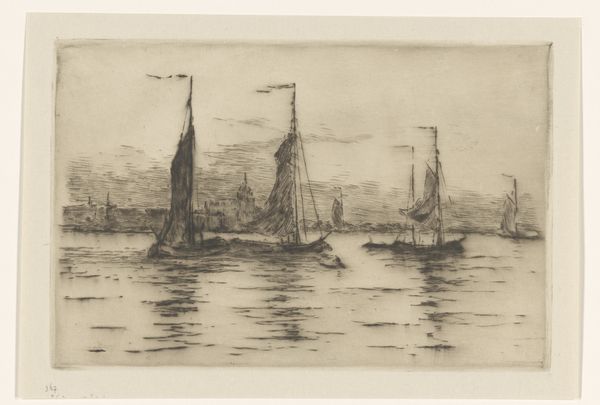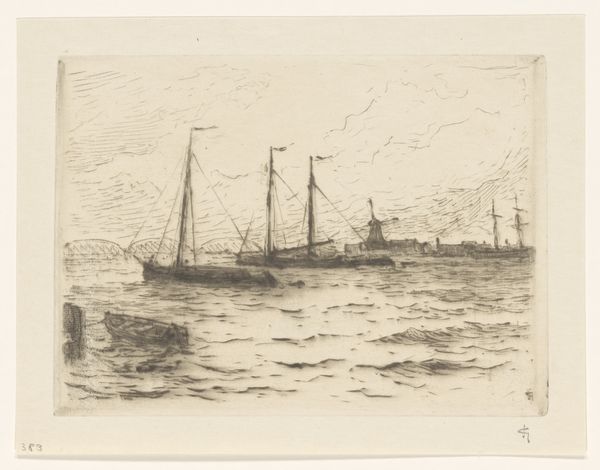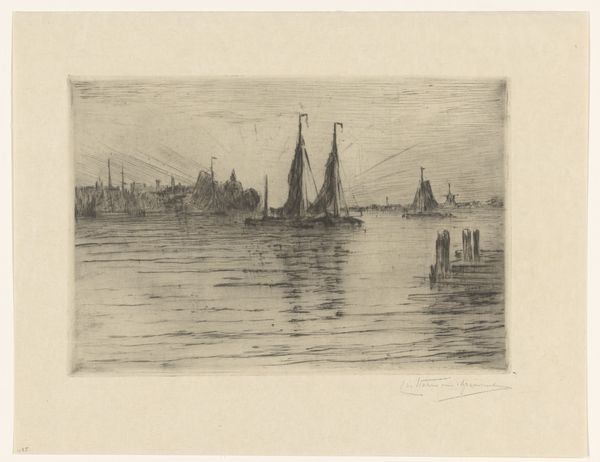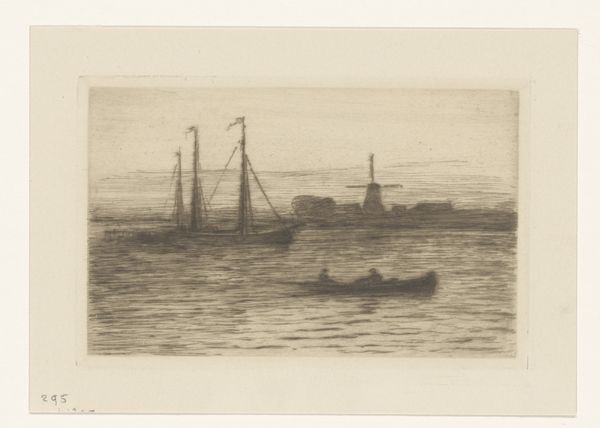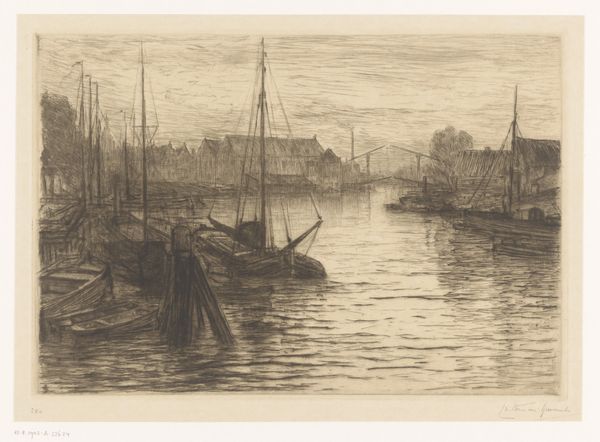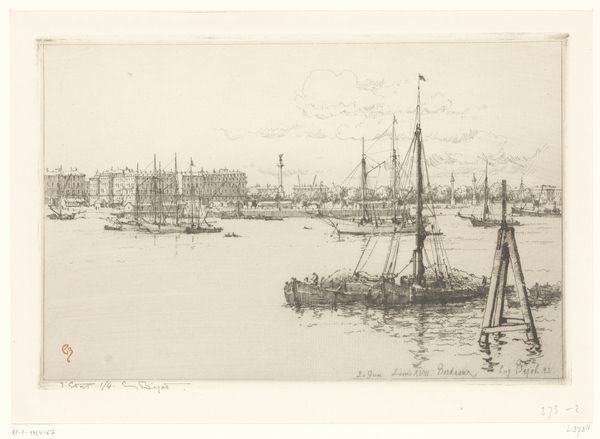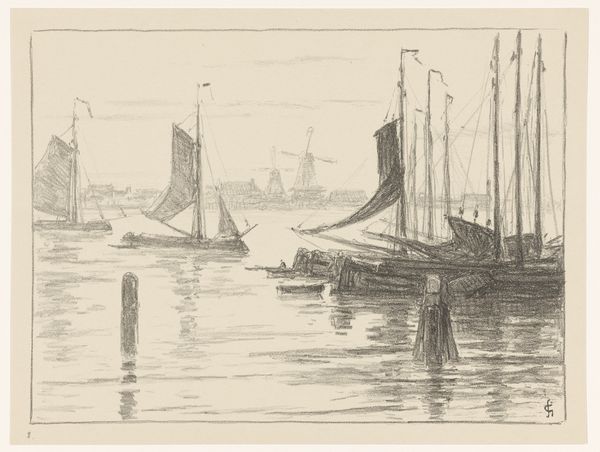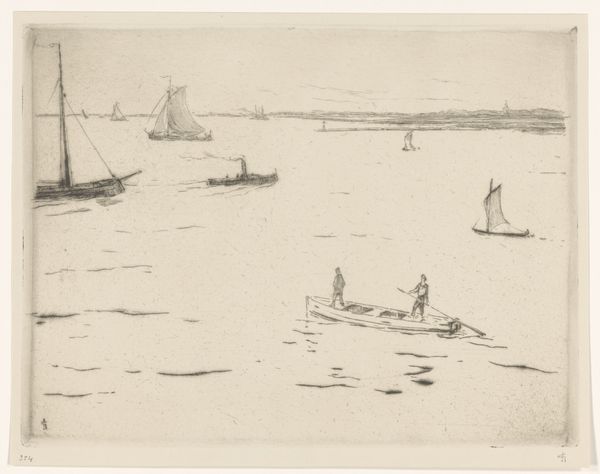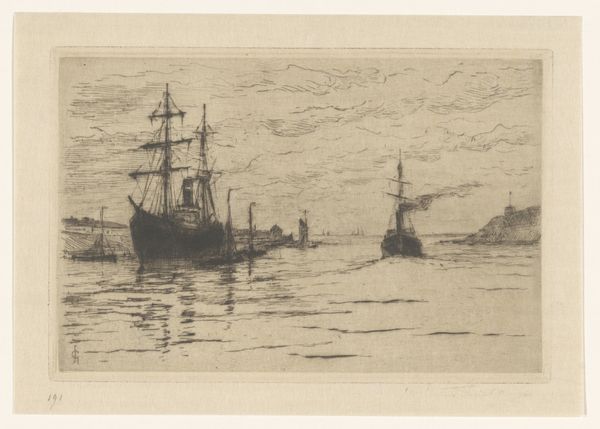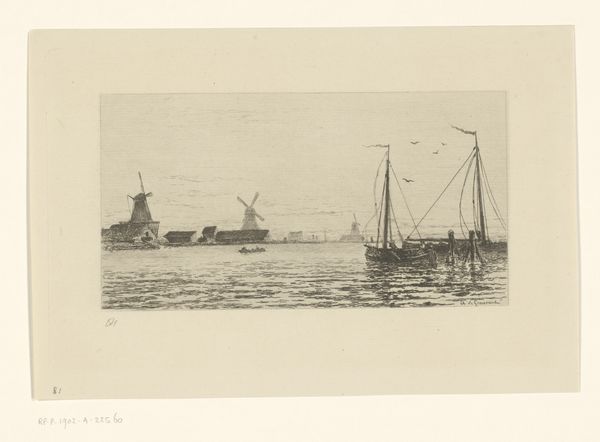
Riviergezicht met zeilschepen en een stoomschip 1851 - 1924
0:00
0:00
carelnicolaasstormvansgravesande
Rijksmuseum
print, etching
#
dutch-golden-age
# print
#
etching
#
landscape
#
etching
#
pencil drawing
#
genre-painting
Dimensions: height 270 mm, width 415 mm
Copyright: Rijks Museum: Open Domain
Editor: Here we have Carel Nicolaas Storm van 's-Gravesande’s "River View with Sailing Ships and a Steamer", an etching, placing us somewhere between 1851 and 1924. I'm immediately drawn to the contrast between the sailing vessels and the industrial steamer; it speaks of transition. What jumps out at you? Curator: What interests me most here is the etching process itself. The lines, the plate, the biting… they speak to a method of reproduction inherently tied to labor. We're not dealing with the supposed 'aura' of a unique painting. Consider the socio-economic context: who would have produced this, and for whom? Editor: So, instead of thinking about it as just a pretty scene, we should be questioning the process that allowed it to be created and distributed? Curator: Precisely. This isn't about the artistic genius of van 's-Gravesande in isolation, but about the means of production available and how that impacted the dissemination of imagery. Think about the copper plate, the acid, the press – each a component of a larger industrial system. What implications do you see with the advent of easier means of pictorial production and distribution at the time? Editor: Well, perhaps the original doesn't have as much worth when there can be near limitless replications of an image… how would that be consumed at the time? As a piece of news? Something decorative? Curator: That’s exactly where the analysis gets interesting! Consumption patterns, the rise of a market for such prints… it's all interwoven with the industrial revolution itself. Consider where these would be hung, who could afford them. Are these scenes documenting social progress? Editor: So, it's not just a view of a river; it’s about the materials, the making, and the social life of the etching itself. Curator: Absolutely. We need to look beyond the surface representation to understand the forces that shaped its very existence.
Comments
No comments
Be the first to comment and join the conversation on the ultimate creative platform.
